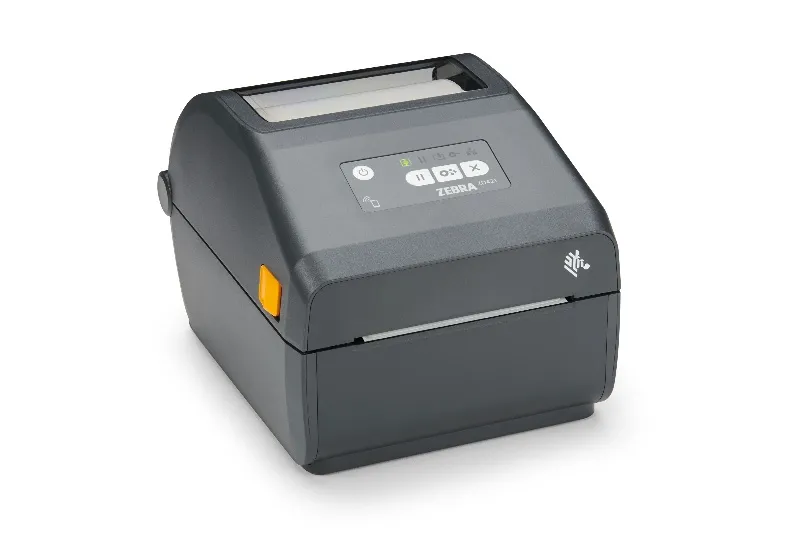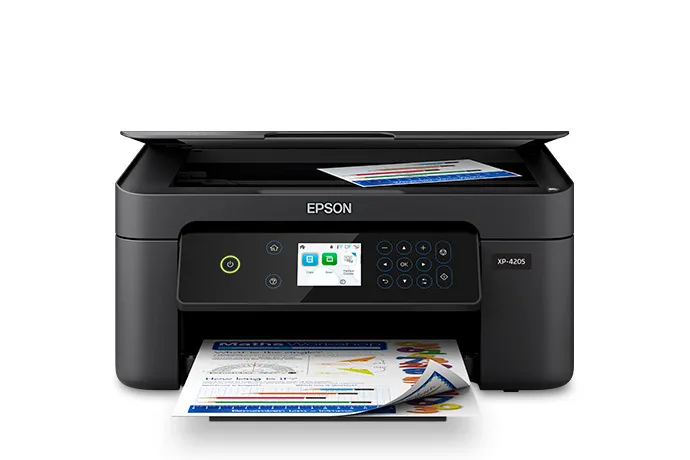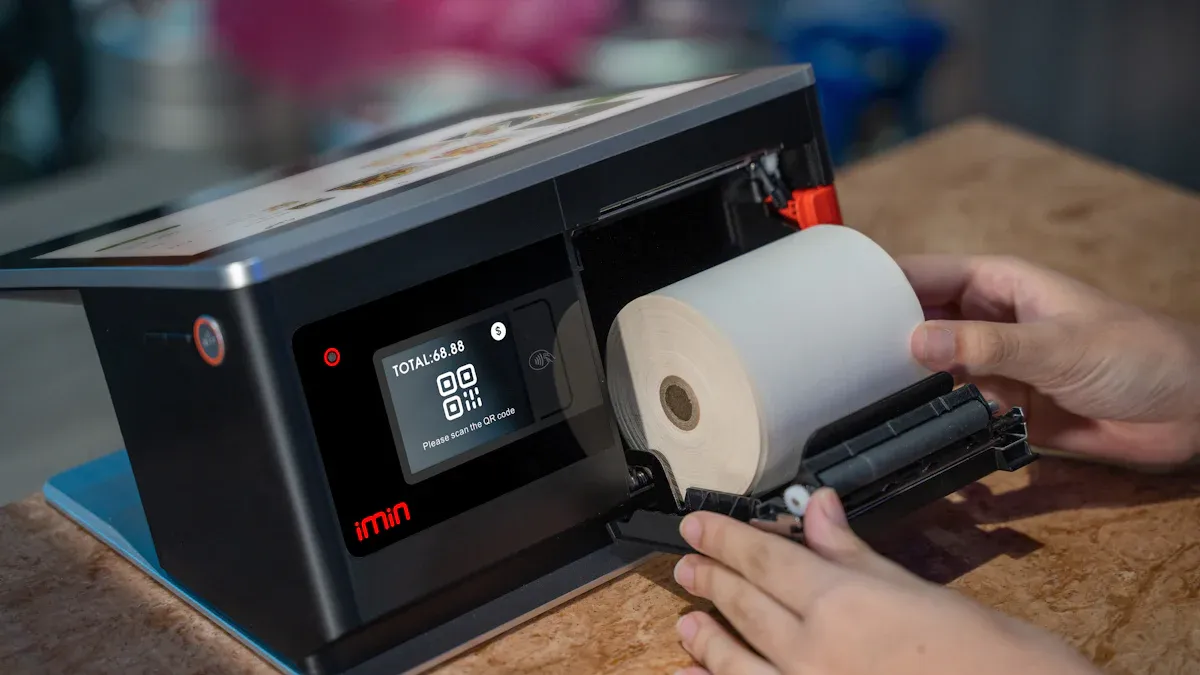
Most thermal printers do not require ink, even when printing colour thermal labels. Images appear because the printer uses heat-sensitive materials rather than ink or toner. Direct thermal printers create images by heating special paper, while thermal transfer printers use a ribbon and heat to apply images onto labels. You can find thermal printers in many settings, such as stores for receipts, warehouses for shipping labels, and hospitals for wristbands. Over the past ten years, more businesses have adopted these printers because they are fast, reliable, and ideal for barcoding and inventory tasks.
Key Takeaways
Most thermal printers do not need ink. They make images by using heat on special paper or ribbons. Direct thermal printers only need heat-sensitive paper. Thermal transfer printers need ribbons that have ink. Color thermal printing works by heating layers in the paper. These layers change color without regular ink. Thermal printers help save money and time. They do not need ink cartridges and need less care. Keep thermal paper in a cool, dark place. This helps prints last longer and keeps supplies fresh.
Ink Use in Thermal Printers

Direct Thermal vs. Thermal Transfer
There are two main kinds of thermal printers. These are direct thermal and thermal transfer. They both make images in different ways. They also use ink in different ways.
Direct thermal printers use heat-sensitive paper. The print head gets hot and touches the paper. This heat causes a chemical change. The image appears on the paper. You do not need ink or a ribbon for this.
Thermal transfer printers use a ribbon with ink on it. The print head heats the ribbon. The ink melts and sticks to the label or paper. You have to change the ribbon when it is empty.
Tip: If you want less to keep track of, pick direct thermal printers. You only need to buy thermal paper for them.
Here is a simple chart:
Printer Type | Ink or Ribbon Needed? | How It Works |
|---|---|---|
No | Heat changes the color of special paper | |
Thermal Transfer | Yes (ribbon) | Heat melts ink from ribbon onto the label or paper |
Why No Ink Is Needed
You may wonder how these printers work without ink. The answer is in the science of thermal printing. Direct thermal printers use paper with a special layer. When the print head gets hot, it touches certain spots. The coating changes color because of a chemical reaction. No ink is needed for this to happen.
Color thermal printing uses even more science. The paper has layers of tiny color crystals. Each layer melts at a different heat level. When the printer gets hot, the crystals melt and harden. This makes different colors. This is called thermochromism. It means the material changes color when heated. By changing the heat, you get many colors. You do not need regular ink for this.
Note: Thermal printers use heat and special paper to make images. You do not need to worry about ink or toner running out. This makes thermal printers fast, easy to use, and simple to take care of.
How Colour Thermal Labels Work
Heat-Sensitive Materials
When you use colour thermal labels, you rely on special heat-sensitive materials. These labels use a type of paper that reacts to heat. The paper has a coating that changes color when the print head in your thermal printer gets hot. You do not need ink or ribbons for this process. The label itself holds everything needed to make an image.
Most colour thermal labels use heat-sensitive paper. This paper is common in direct thermal labels. You see it in places like stores for receipts, warehouses for shipping labels, and even in barcodes. The print head heats up certain spots on the label. The heat triggers a chemical reaction in the coating. This reaction causes the color to appear exactly where you want it.
Note: The label’s coating responds only to the heat from the printer. This makes the process fast and clean. You do not have to worry about messy ink or replacing toner.
Chemical Color Change
The magic behind colour thermal labels comes from a chemical color change. The coating on the label contains special chemicals called leuco dyes and color developers. Here is how the process works:
1. The print head heats up and touches the label’s coating. 2. The heat melts parts of the coating. 3. This melting causes a proton transfer between the color developer and the leuco dye. 4. The leuco dye, which starts out colorless, changes into a colored form. 5. You see the image or text appear on the label. 6. Other ingredients, like sensitizers, help the reaction happen at lower temperatures. Binders keep the coating stuck to the paper. 7. The coating can also react to things like sunlight, moisture, or rubbing, which may cause fading over time.
The color change in colour thermal labels happens because of a system inside the coating. This system uses a leuco dye, a color developer, and a solvent. When the label gets hot, the solvent melts. This lets the dye and developer mix and create color. When the label cools, the color stays in place. This process is called thermochromism.
You should know that this method is different from traditional ink-based printing. In inkjet or laser printers, you use ink or toner to make images. The printer puts ink or powder on the paper. With colour thermal labels, you do not add anything to the label. The label itself changes color when heated. This makes the process simple and reduces the need for extra supplies.
Tip: Colour thermal labels give you a clean and efficient way to print. You do not need to worry about running out of ink. The label’s coating does all the work.
Supplies Needed

Thermal Paper
You must use thermal paper with a direct thermal printer. This paper has many layers that help make clear images. The base layer makes the paper strong and hard to tear. The precoat layer helps heat move to the thermal layer. It also keeps the print sharp and clear. The thermal layer has chemicals that react to heat. These chemicals make the image show up. A topcoat protects the paper from oil, water, scratches, and humidity. This keeps your labels or receipts safe and easy to read for longer.
Layer | Description |
|---|---|
Base Layer | Gives support and thickness; keeps the image uniform and strong. |
Precoat Layer | Helps heat transfer; improves clarity and keeps the thermal layer in place. |
Thermal Layer | Contains heat-sensitive chemicals; reacts to heat to create images without ink. |
Thermal paper is great for receipts, tickets, and labels. You do not need to buy ink or toner for it. The paper does all the work by itself. If you keep your thermal printouts in a cool, dark place, they can last for years. Keep them away from heat and sunlight so they do not fade or turn yellow.
Tip: Keep your thermal paper rolls in their original packaging. Store them away from heat to keep them fresh and ready to use.
Ribbons for Transfer Printers
If you use a thermal transfer printer, you need both thermal transfer labels and ribbons. The ribbon goes between the print head and the label. When the print head gets hot, it melts the ink on the ribbon. The melted ink sticks to the label and makes a strong image.
Thermal transfer ribbons come in different types. Each type is best for certain jobs:
Ribbon Type | Key Features | Best For |
|---|---|---|
Wax | Least expensive, less durable | Shipping, retail, warehouse labels |
Wax-Resin | More durable, chemical resistant | Barcodes, pharmaceuticals, shelf labels |
Full Resin | Most durable, resists harsh environments | Medical, chemical, textile, synthetic tags |
Wax-resin ribbons work well for coated or synthetic labels. They also resist smudges.
Full resin ribbons are the strongest. They are best for tough jobs and synthetic materials.
Using ribbons makes more waste. Direct thermal printers do not need ribbons, so they make less waste. If you want less waste and fewer supplies, direct thermal printing may be better for you.
Note: Pick the right ribbon for your label material and where you use it. This helps your labels last longer and look good.
Benefits of Thermal Printing
Low Maintenance
Thermal printers are easy to take care of. They do not use ink or toner, so you never have to change messy cartridges. You also do not have to worry about clogged print heads. These printers have fewer moving parts, so there is less that can break. This makes them more reliable than ink-based printers. They are also easier to keep working.
Thermal printers are great for busy places like stores, hospitals, and warehouses. They print fast and do not make much noise. Some models can print up to 200 millimeters per second. This helps you finish big jobs quickly. The print head can last for up to 50 kilometers of printing. The auto cutter can make up to 1 million cuts before it needs fixing. You can connect these printers in many ways, like Wi-Fi, USB, or Bluetooth. This makes setting them up simple.
Tip: With fewer parts, you spend less time fixing thermal printers. You get more work done and have fewer problems.
Cost Savings
Thermal printers help you save money in many ways. You do not need to buy ink or toner. You only need heat-sensitive paper or sometimes a ribbon. The printer has fewer parts that can wear out, so maintenance costs stay low.
Here is a simple chart to compare thermal printers and ink-based printers:
Cost Aspect | Thermal Printers | Ink-based Printers |
|---|---|---|
Consumable Costs | Use heat-sensitive paper, which is cheaper and eliminates ink/toner expenses. | Require regular purchase of expensive ink cartridges. |
Maintenance Costs | Minimal maintenance due to fewer moving parts and less wear and tear. | Require frequent cleaning, part replacements, and troubleshooting, leading to higher costs. |
Thermal printers are better for the environment. They use less energy and make less waste. You do not need ink cartridges, so less plastic ends up in landfills. They use less power, so you lower your carbon footprint.
Thermal printers are faster than inkjet or laser printers. They do not need to warm up.
They last longer and need fewer repairs, so you spend less money.
You can use them for big jobs in stores, hospitals, and shipping.
Note: Thermal printing gives you a fast, reliable, and low-cost way to print for your business or at home.
Most thermal printers do not need ink, even for color labels. These printers use heat to make pictures. This makes them easy and dependable.
Direct thermal printers use special paper. They do not need ink or ribbons.
Thermal transfer printers use ribbons instead of ink cartridges. These ribbons help make strong and colorful prints.
Thermal printers help you save money and need less fixing. They print fast and look clear. You can trust them for receipts, labels, and other jobs.
FAQ
Do thermal printers ever need ink or toner?
You do not need ink or toner for most thermal printers. Direct thermal printers use special paper. Thermal transfer printers use ribbons, not ink cartridges. You save time and money because you do not replace messy ink.
Can you print in color with a thermal printer?
Yes, you can print in color with special color thermal labels. The printer uses heat to change the color of the label’s coating. You do not need colored ink or toner.
How long do thermal prints last?
Thermal prints can last for years if you store them in a cool, dark place. Heat, sunlight, and moisture can make them fade faster. For important records, keep them away from light and heat.
What supplies do I need for a thermal printer?
You need thermal paper for direct thermal printers. For thermal transfer printers, you need both labels and ribbons.
No ink or toner required
Store supplies in a dry, cool place
